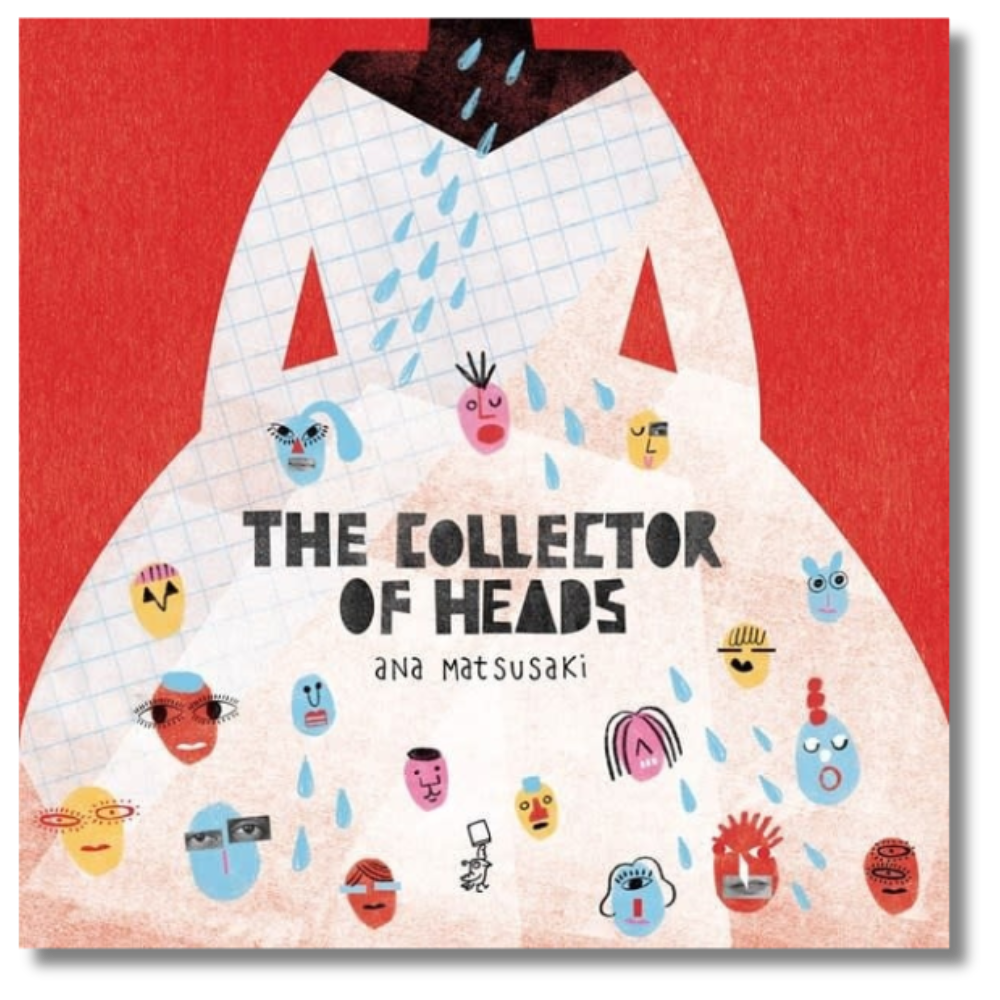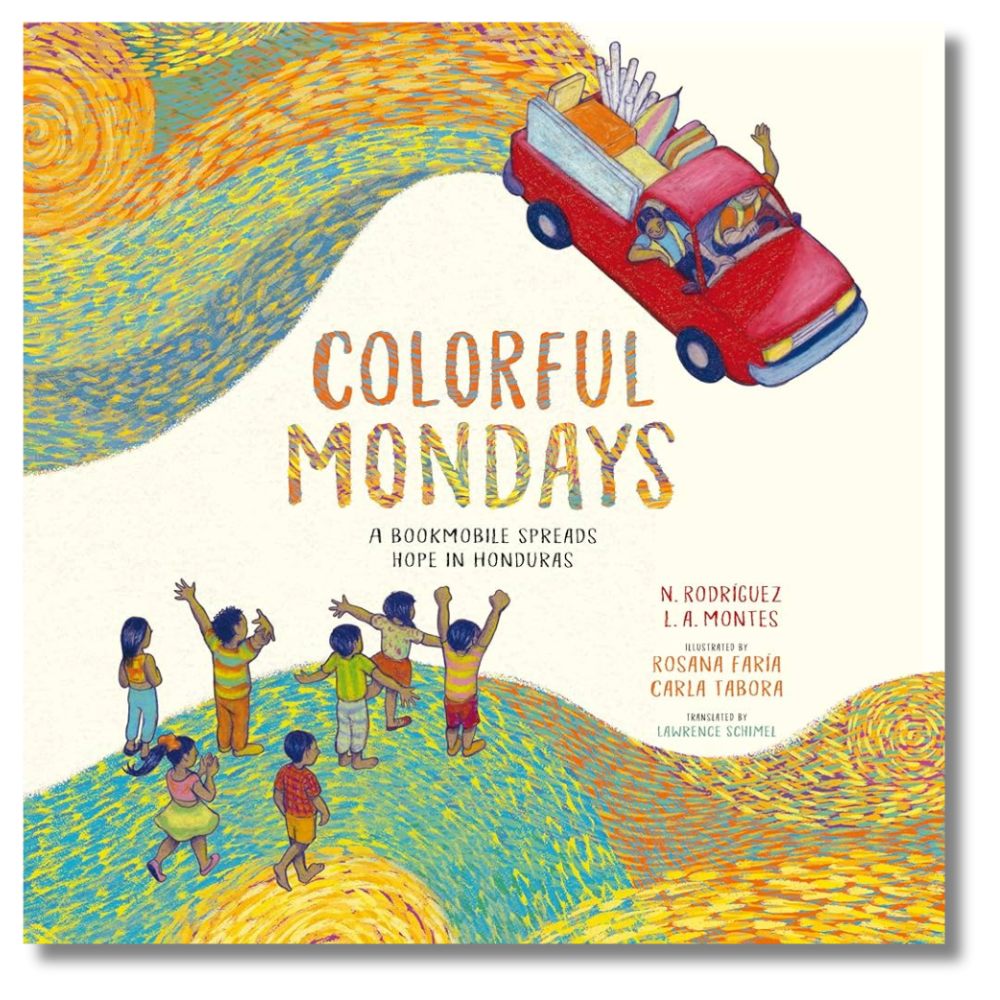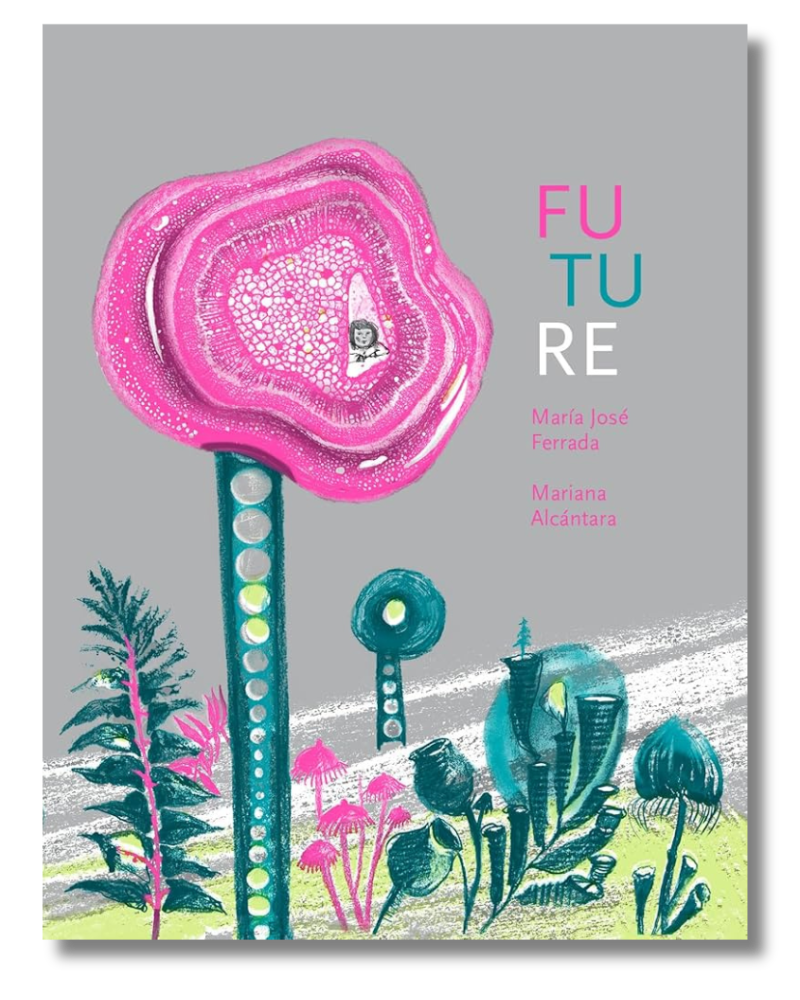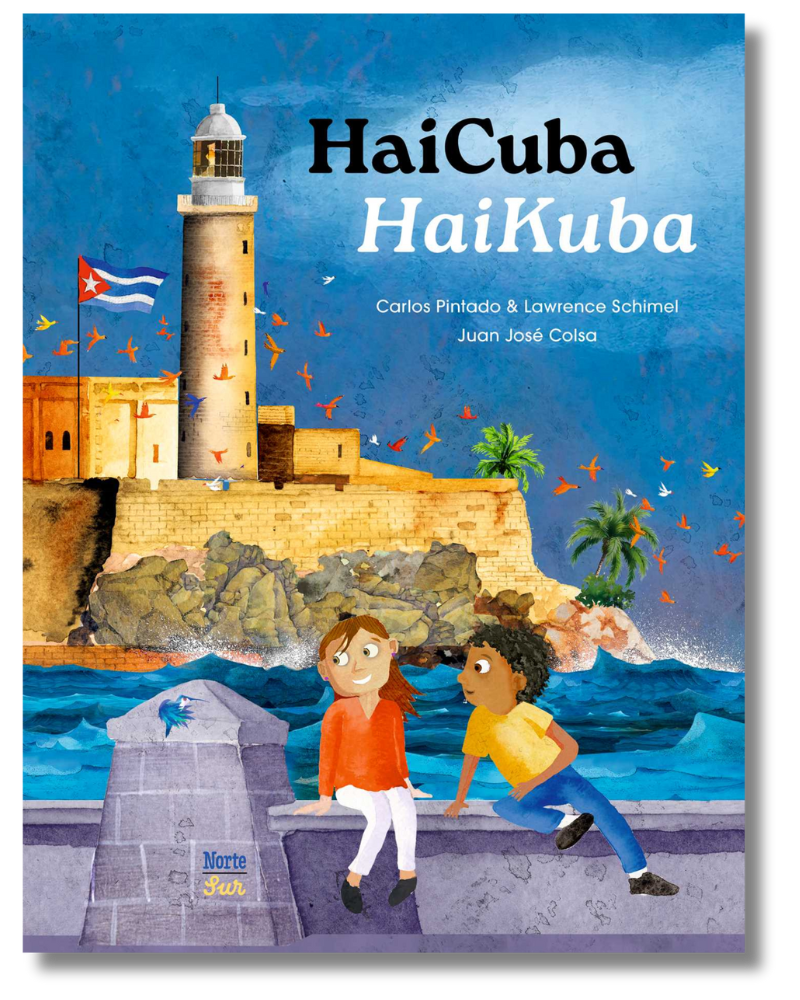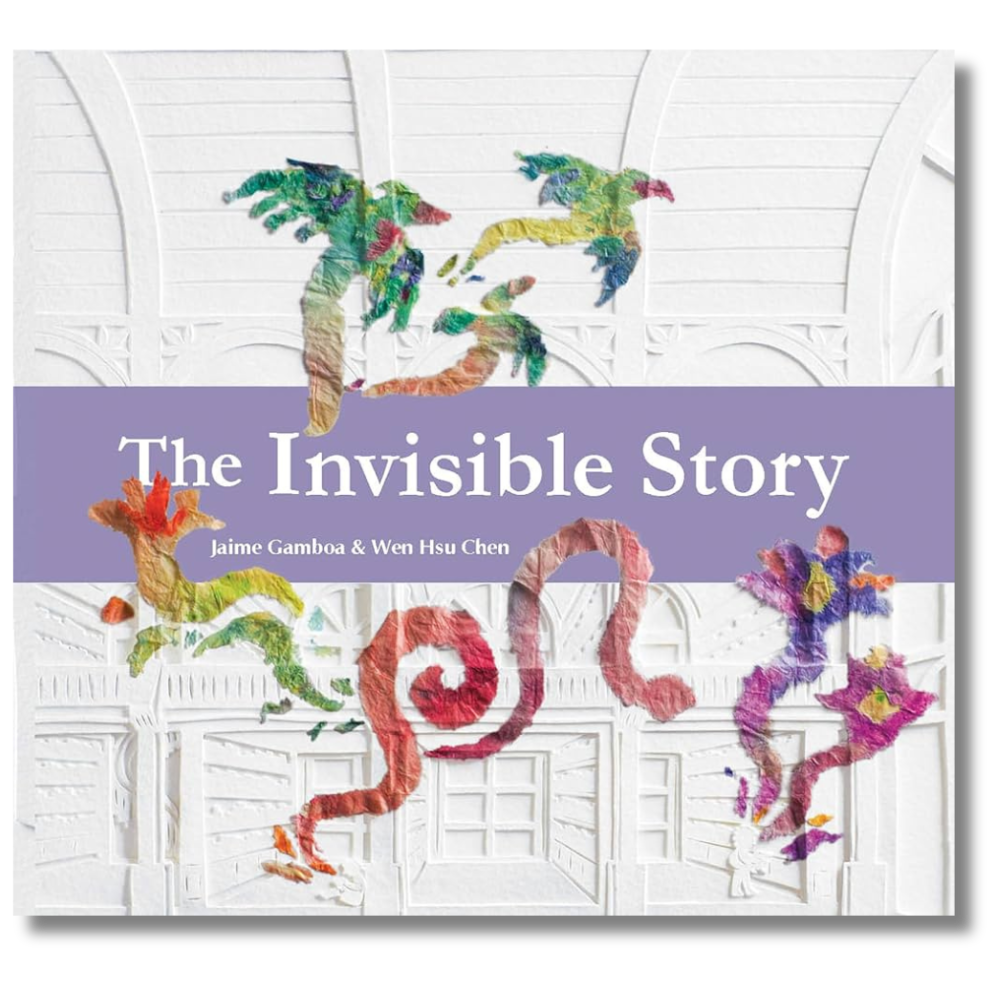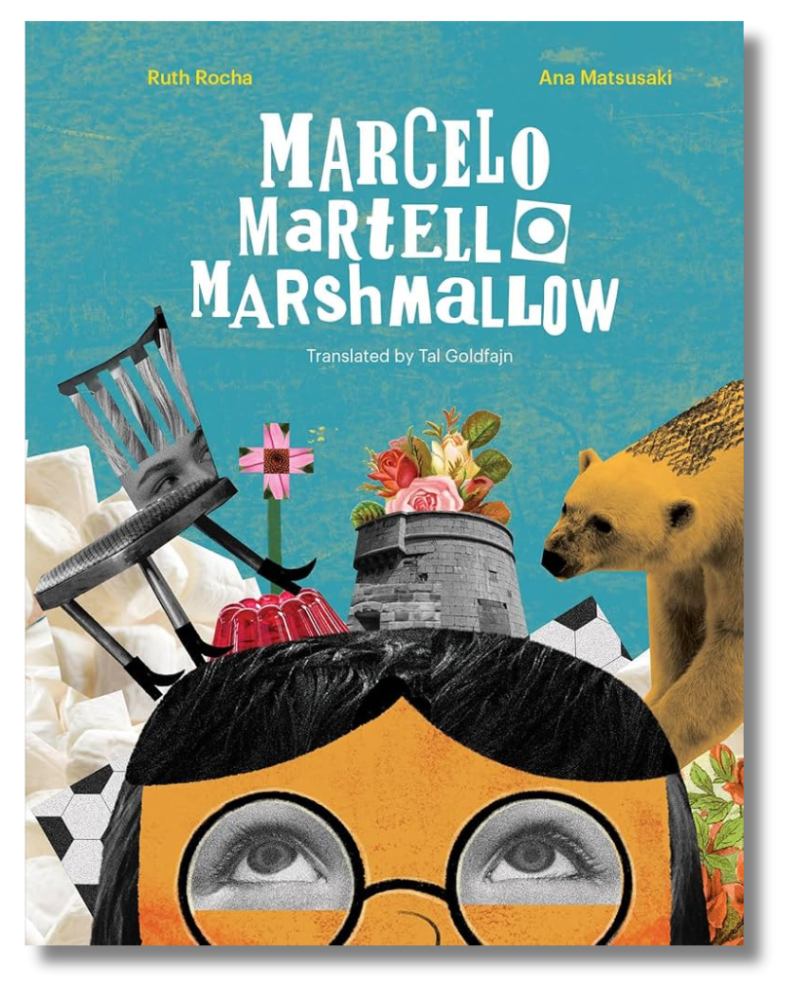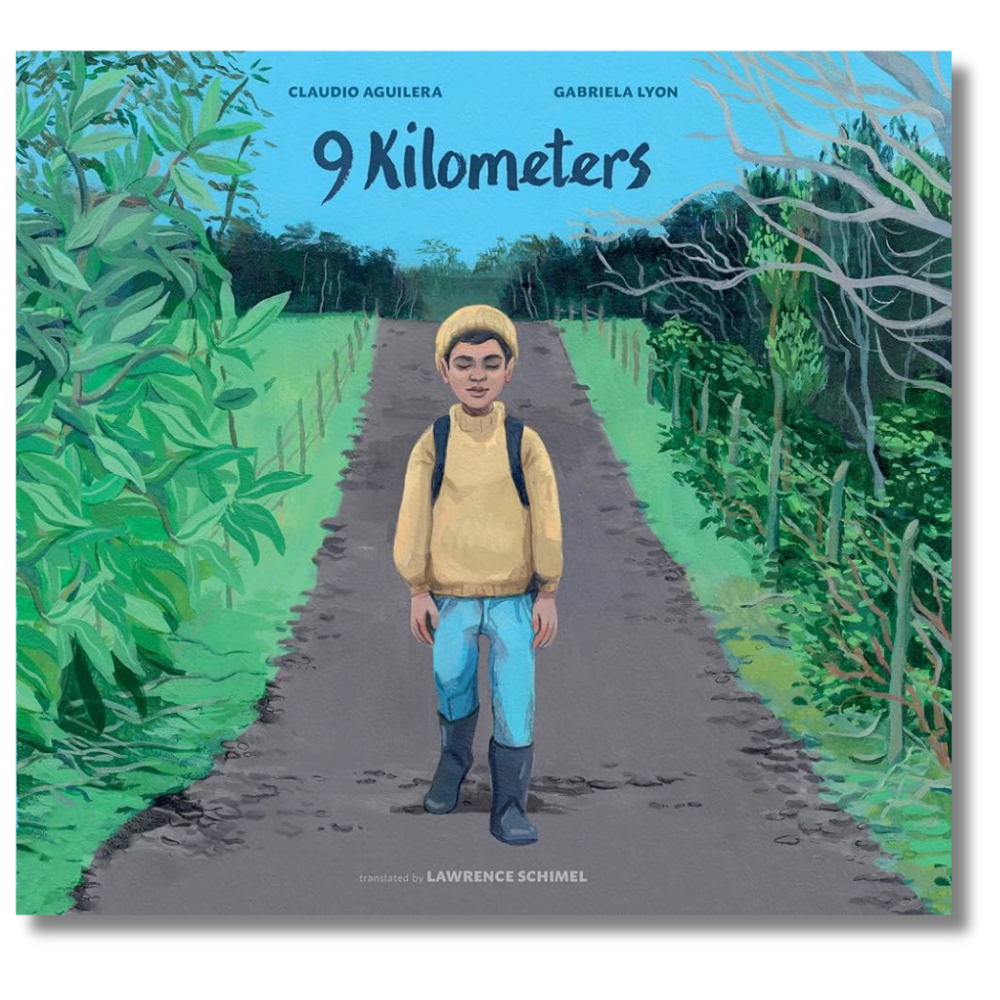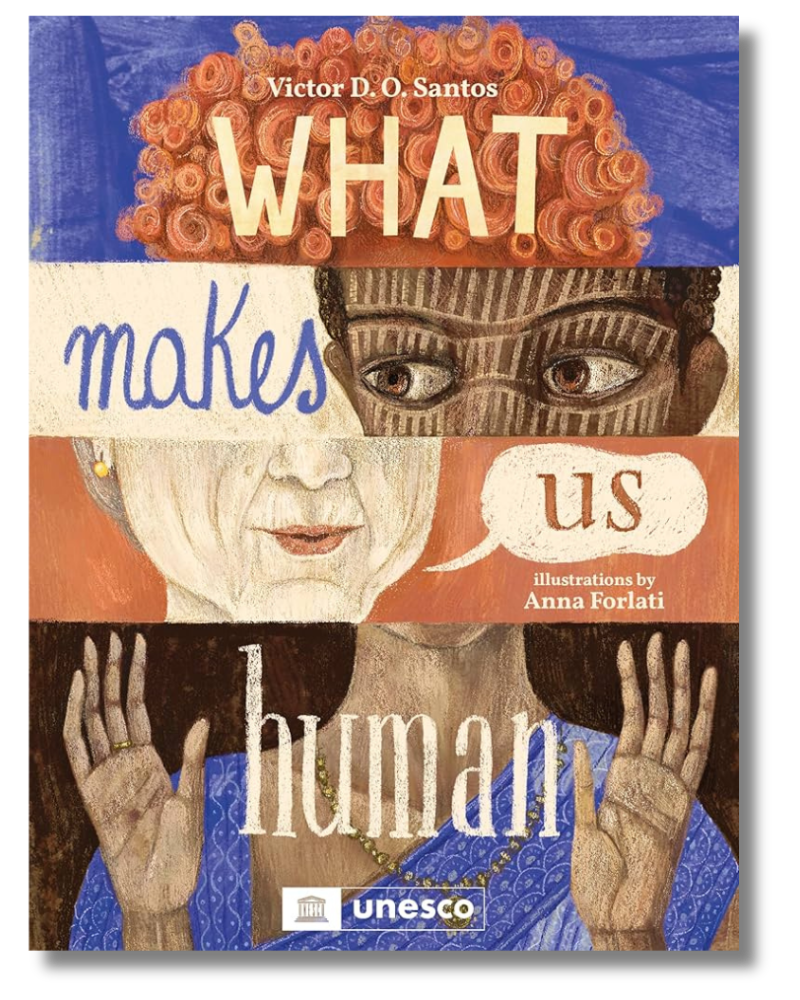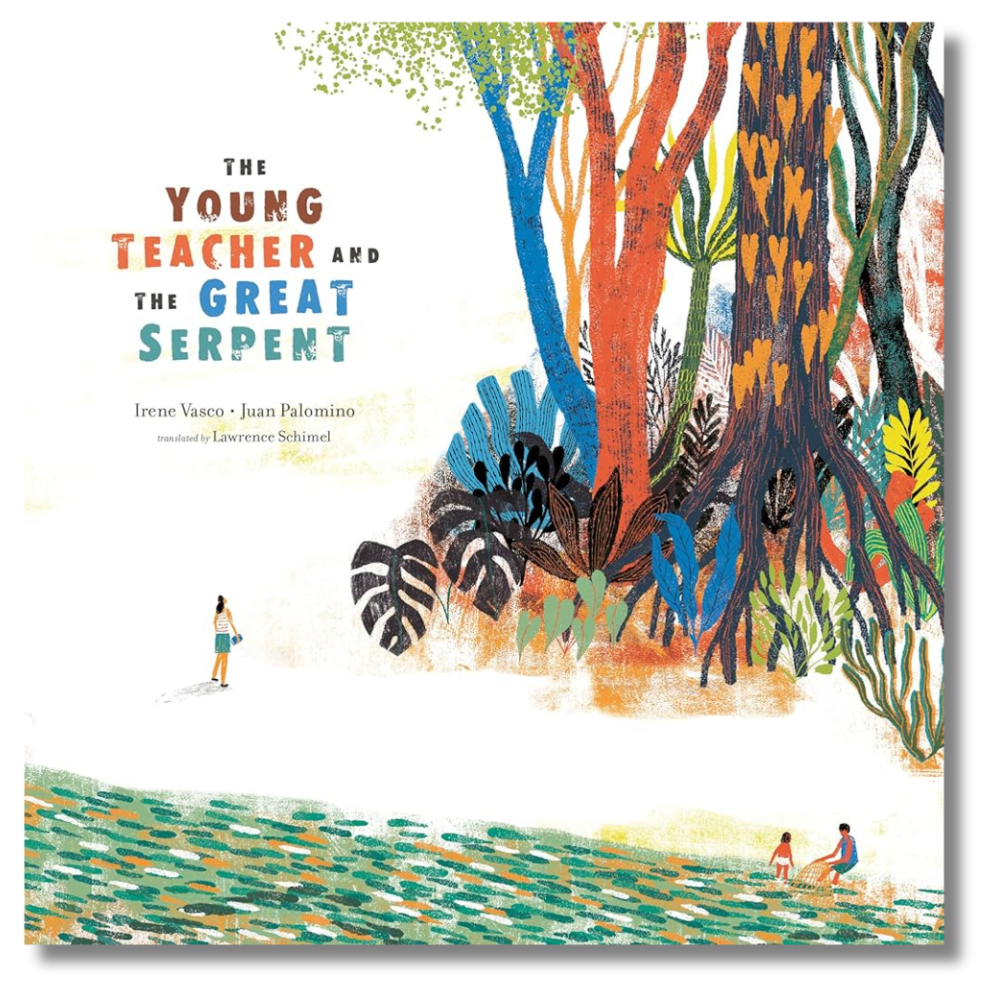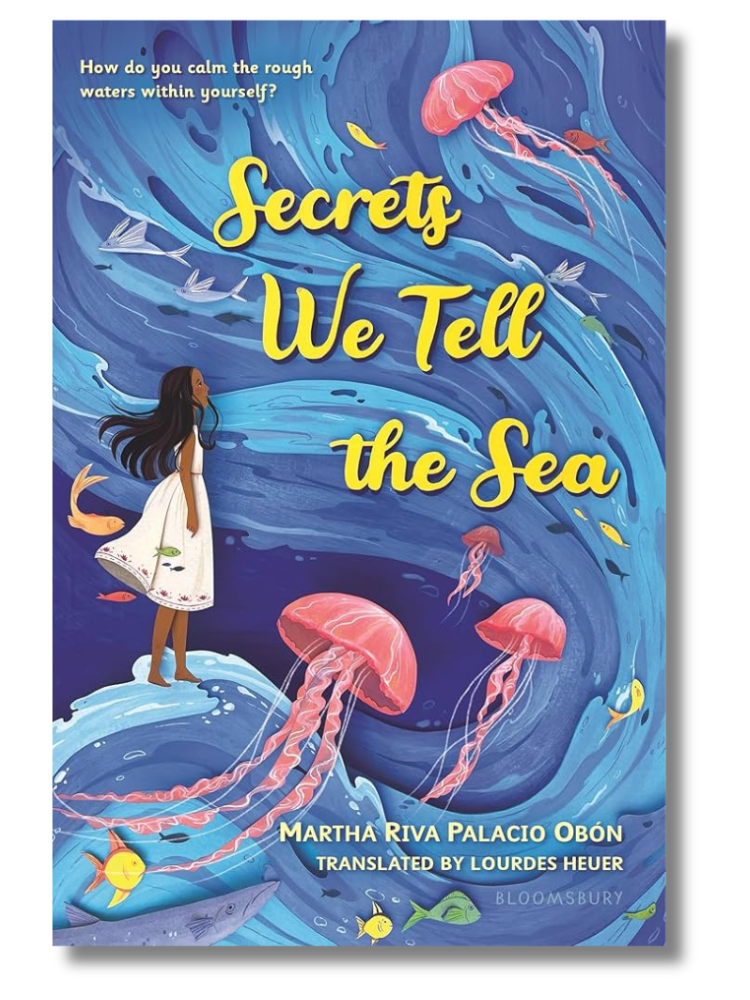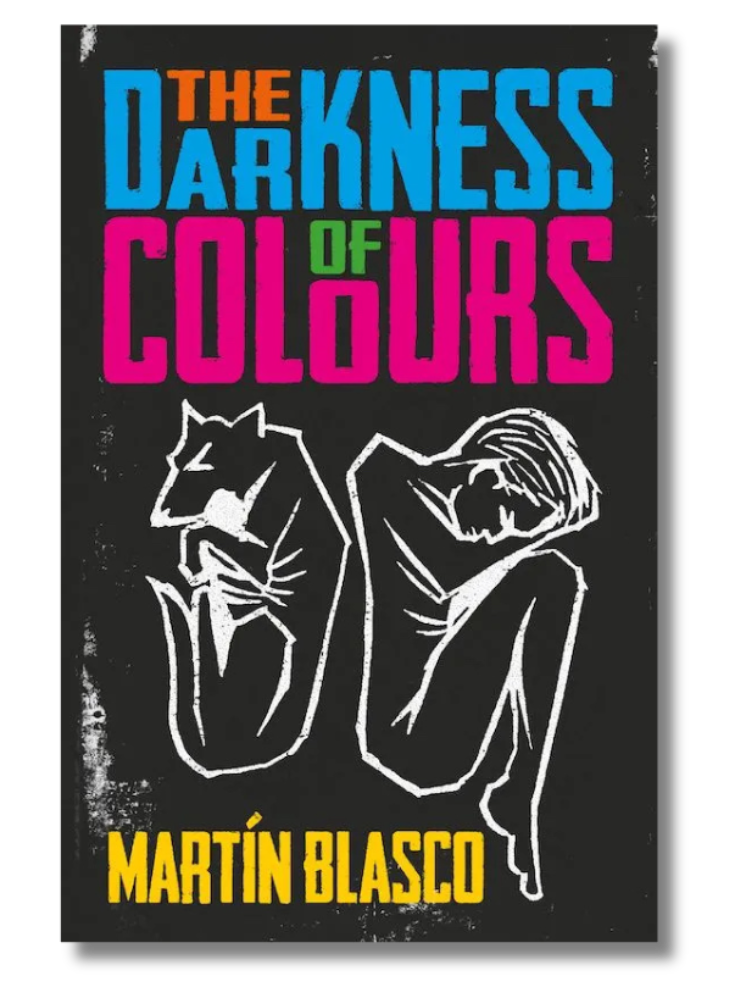Spanning nine countries from the Caribbean and Mexico down to Chile and Argentina, these books are a vibrant showcase of the diversity in storytelling and illustration styles from authors writing for young people in Spanish and Portuguese. The riches here are testament, too, to the work of independent publishers such as Enchanted Lion, Eerdmans, and HopeRoad in the UK, as well as Tapioca Stories—a young independent house specializing in translations of quirky Latin American picture books. Featuring sentient braille books and expressive cave art, a library bus that brings stories and hope on Mondays, and an embroidered shawl you can voyage through to the Other Side, these books take us to worlds where stories “fill the air with color.” In the four translations for older readers, darkness seeps in, but for all the gruesome themes, these are stories told with flair.
PICTURE BOOKS
Afterward, Everything Was Different
Written in Spanish by Jairo Buitrago, illustrated by Rafael Yockteng, translated by Elisa Amado
First published in 2022 in Venezuela as ¡Ugh! Un relato del pleistoceno
English edition published by Greystone Books, 2023
Reviewed by Ruth Donnelly
With no words at all until the final few pages, this is a story told almost entirely in pictures. And what pictures they are. The grayscale illustrations, like intricate pencil sketches, depict a family living in the Pleistocene age, battling prehistoric creatures and natural disasters, until they reach the safety of a cave. When they get there, the young daughter of the family uses a smoldering stick to draw pictures of their adventures on the cave wall. A clever, beautifully wrought theory of how cave paintings first came to be, this book will spark the imaginations of younger and older children alike.
The Collector of Heads
Written in Portuguese and illustrated by Ana Matsusaki, translated by Bruna Dantas Lobato
First published in 2020 in Brazil as A colecionadora de cabeças
English edition published by Tapioca Stories, 2023
Reviewed by Ruth Donnelly
Colorful illustrations mask a darker subject matter in this slightly surreal picture book. Rosália, like many people, enjoys collecting things. But her collection is a little bit different: Rosália collects the heads of dead people. As she places each head under a microscope, we can see the ideas and memories inside. From botanist to thief, musician to baby, each has their own unique set of thoughts, some more surprising than others. With a color palette that reminds me of Mexico’s Day of the Dead and an illustration style that draws much from Picasso, this is a lovely book to get children thinking about some of life’s bigger questions.
Colorful Mondays
By Nelson Rodríguez and Leonardo Agustín Montes (Honduras), illustrated by Rosana Faría and Carla Tabora, translated from Spanish by Lawrence Schimel
First published in 2021 in Spain as Los lunes de colores
English edition published by Eerdmans Books for Young Readers, 2023
Reviewed by Deborah Iwabuchi
A story about an actual bookmobile run by JustWorld and featuring one of the authors, Nelson Rodríguez. On weekly trips to a poor community in Honduras, the bookmobile brings children books, puppet shows, crafts projects, and snacks. Little Luis lives for these Monday visits, drinking in the books and performances and then spreading the joy by relating it all in great detail to friends and family who could not attend. The communities are awash in sadness and difficulties, but Mondays are different. “Fill the air with colors,” Nelson encourages the children, “and be careful when breathing sad stories.”
Future
By María José Ferrada and Mariana Alcántara, translated from Spanish by Kit Maude
First published in 2022 in Mexico as Futuro
English edition published by Tapioca Stories, 2023
Reviewed by Catherine Xinxin Yu
In this electrifying picture book, the future is a silvery thing, a door to a garden, and a long staircase that connects the present to as many whimsical possibilities as one dares to imagine. Ferrada’s poetic voice shines through in Maude’s playful translation, livened up with catchy (half-)rhymes that trip right off the tongue, like “fish in bowler hats and dogs that know math” or “rumbling seas and buzzing bees.” Alcántara’s illustrations blend spacepunk aesthetics with botanical motifs in energetic shades of magenta, chartreuse, teal, and forest green, creating a visual treat for children and grown-ups alike.
HaiCuba/HaiKuba
Bilingual Spanish and English haikus by Carlos Pintado and Lawrence Schimel, illustrated by Juan José Colsa
Published by North-South Books, 2024
Reviewed by Ruth Ahmedzai Kemp
These bilingual haikus burst with cultural detail amid Juan José Colsa’s stunning full-page, full-color illustrations of Havana life. Written in the voice of two young friends, the poems make us pause and look closely at the details and their expressions. From busting some moves on the dance floor to catching fire beetles in the woods, from spotting butterflies reflected in the river Almendares to spying on lovers on the waterfront, from laundry swaying on the line to the feel of a freshly ironed guayabera shirt, it all makes for a vivid introduction to an island proud of its nature, its music, its food, its ethnic diversity and, above all, its ¡Cubanidad!
The Invisible Story
By Jaime Gamboa & Wen Hsu Chen, translated from Spanish by Daniel Hahn
First published in 2013 in Guatemala as El cuento fantasma
English edition published by Lantana, 2024
Reviewed by Catherine Xinxin Yu
A sentient book without printed words or images deems itself empty, and hides away until a blind girl reads the braille on its pages and convinces it of its unique worth. Told from the perspective of the book itself, this story about being differently abled is as original as it is uplifting.
Wen Hsu Chen creates a textured visual narrative with layered cardboard cutouts in a quiet, pensive white, adding occasional splashes of color to indicate the vibrant stories that emerge from book pages. If words can be read with fingertips, art can also be touched with the eyes.
Loose Threads
Written and illustrated by Isol, translated from Spanish by Lawrence Schimel
First published in Argentina as La Costura, 2021
English edition published by Enchanted Lion, 2024
Reviewed by Zoraida Rivera Morales
Leilah is always missing things. Her mother can’t understand why. Leilah’s grandma tells her their village is like her embroidery; tidy on one side and messy on the Other Side. Leilah can only visit the Other Side in dreams. But she’s seen the holes. Her things must fall through them. She’ll fix it. That’s what she thinks!
The Argentine picture book author-illustrator Isol takes the reader on a voyage through the two sides of a hand-embroidered Palestinian shawl. The unique and colorful illustrations are sure to capture the young reader’s attention, inviting them to accompany Leilah from one world to another.
Marcelo, Martello, Marshmallow
Written by Ruth Rocha, illustrated by Ana Matsusaki, translated from Portuguese by Tal Goldfajn
First published in 1976 in Brazil as Marcelo, Marmelo, Martelo (edited and reissued in 2011)
English edition published by Tapioca Stories, 2024
Reviewed by Zoraida Rivera Morales
Marcelo is a very curious boy. His family thinks he asks too many questions. He wants to know the meaning of words, where they came from, who named things and why. Not pleased with their answers, he decides to invent new names for things, with unpredictable results.
Ruth Rocha’s picture book is about language, being creative, and finding meaning in the world around us. An important Brazilian children’s writer, she’s published more than two hundred titles. Matsusaki’s illustrations add an interesting layer to this book with her joyful and creative style.
9 Kilometers
Written by Claudio Aguilera, illustrated by Gabriela Lyon, translated from Spanish by Lawrence Schimel
First published in 2022 in Venezuela as 9 kilómetros
Eerdmans Books for Young Readers, 2023
Reviewed by Zoraida Rivera Morales
A young boy, who lives in Chile, leaves home when it’s still dark. He walks nine kilometers to get to school. In school he learned that that’s nine thousand meters, more than five miles. As he walks, he enjoys the sounds and sights of the forest and the mountains. He counts; he shares animal facts. Find out how many steps he takes to get to school!
Through lovely similes and metaphors, we see how different the roads to school can be, while learning some math along the way. The back matter shares short vignettes of other walkers around the world.
What Makes Us Human
By Victor D. O. Santos and Anna Forlati
Published by Eerdmans Books for Young Readers, 2024
Reviewed by Catherine Xinxin Yu
This gem of a book is a riddle about language in its myriad forms. Each page provides a clue to the technology that underpins our communication and ultimately “makes us human.” This timely book coincides with the UNESCO Decade of Indigenous Languages (2022–2032)—which seeks to protect and promote endangered indigenous languages—and sheds light on the importance of language, its dazzling diversity, and the vital connection between language and culture. The illustrations cleverly transform language into visual clues and incorporate various scripts to create a fun and instructive reading experience.
The Young Teacher and the Great Serpent
Written in Spanish by Irene Vasco, illustrated by Juan Palomino, translated by Lawrence Schimel
First published in 2019 in Spain as La joven maestra y la gran serpiente
English edition published by Eerdmans Books for Young Readers, 2023
Reviewed by Ruth Donnelly
A young teacher accepts her first teaching post, in a village in the middle of the Amazonian jungle. After journeying for days by bus and boat, she finally arrives to share her knowledge and her precious books with the children of this remote indigenous community. One day, however, “the great serpent” awakens, and after some initial cynicism from the young teacher, she comes to see that the community has many things to teach her, too. Told in simple language complemented by bold, colorful illustrations, this is a celebration of difference and the lessons we can all learn from each other if we are just prepared to listen.
MIDDLE GRADE
Secrets We Tell the Sea
by Martha Riva Palacio Obón, translated from Spanish by Lourdes Heuer
First published in Mexico in 2011 as Las sirenas sueñan con trilobites
English edition published by Bloomsbury, 2023
Reviewed by Ruth Ahmedzai Kemp
Sofía has a lot going on, as the imagined crabs in her stomach attest: a mom who’s never there and whose live-in boyfriend is a “barracuda.” His abusive behavior results not in him being kicked out, but instead in Sofía being sent to live with Tita, her grandmother, by the sea. Sofía’s deeply felt affinity to the sea offers some solace, and it’s the source of an uneasy friendship with Maura, who can also “speak submarine.” But the sea is not always the friend they want it to be.
Sofía’s reactions to very difficult life events are reflected in her esoterically nautical inner voice—sea creatures and storms abound in Sofía’s vision of the world—and in physical floods, too. With magical realism, and prose that is full of humor and compassion, Sofía and Maura’s story layers realities to powerful effect, with the ferocity of the sea as a living metaphor for grief.
YOUNG ADULT
The Darkness of Colors
Written in Spanish by Martín Blasco, translated by Claire Storey
First published in 2015 in Argentina as La oscuridad de los colores
English edition published by Hope Road Publishing, 2024
Reviewed by Ruth Donnelly
Buenos Aires, 1910. Alejandro arrives at work one morning to find a stranger waiting for him. Omar is the father of a missing child, a one-year-old girl who disappeared twenty-five years ago, alongside four other babies. Now she has returned, and Omar wants Alejandro to investigate her initial disappearance.
Written in short chapters alternating with extracts from the mysterious J. F. Andrew’s diary, and with plenty of twists, this story is guaranteed to hold you in its thrall right to the end. Parental guidance might be advised for younger teens, as some themes are quite dark, but overall this is a pacy, thought-provoking read.
The Book of Denial
By Ricardo Chávez Casteñeda, illustrated and designed by Alejandro Magallanes, translated from Spanish by Lawrence Schimel
First published in 2006 in Mexico as El libro de la negación
English edition published by Enchanted Lion’s Unruly imprint of picture books for teenagers and adults, 2024
Reviewed by Deborah Iwabuchi
A boy, the narrator, cannot understand why his father is failing to make progress on his latest novel, The Book of Denial. Certain that neither of his parents will have any peace until the book is finished, the boy sneaks a look at the manuscript and discovers it is about the refusal of humanity to acknowledge the systemic slaughter of children throughout history. He becomes obsessed with the subject, seeing signs of it everywhere. His refusal to let it go—together with the reader’s journey at his side—becomes the beginning of the end of denial, his father’s ultimate goal.
Never Tell Anyone Your Name
Written in Spanish by Federico Ivanier, translated by Claire Storey
First published in Uruguay in 2020 as Nunca digas tu nombre
English edition published by Hope Road Publishing, 2023
Reviewed by Ruth Donnelly
It’s January and a sixteen-year-old boy is stranded in the Spanish border town of Irun, waiting for the next train to Madrid . . . Spanning a period of just eight hours, and told in the second person and the present tense, Never Tell Anyone Your Name has a sense of immediacy that is compelling. In the opening paragraph, we contemplate the struggle to get over a recent breakup, but everything seems to be looking up when we make a chance encounter with an attractive girl . . . with a twist at the end that I would defy anyone to predict, this refreshingly short, addictive thriller will appeal to the most reluctant of teen readers.
Copyright © 2024 by Ruth Donnelly, Deborah Iwabuchi, Ruth Ahmedzai Kemp, Zoraida Rivera Morales, and Catherine Xinxin Yu. All rights reserved.










